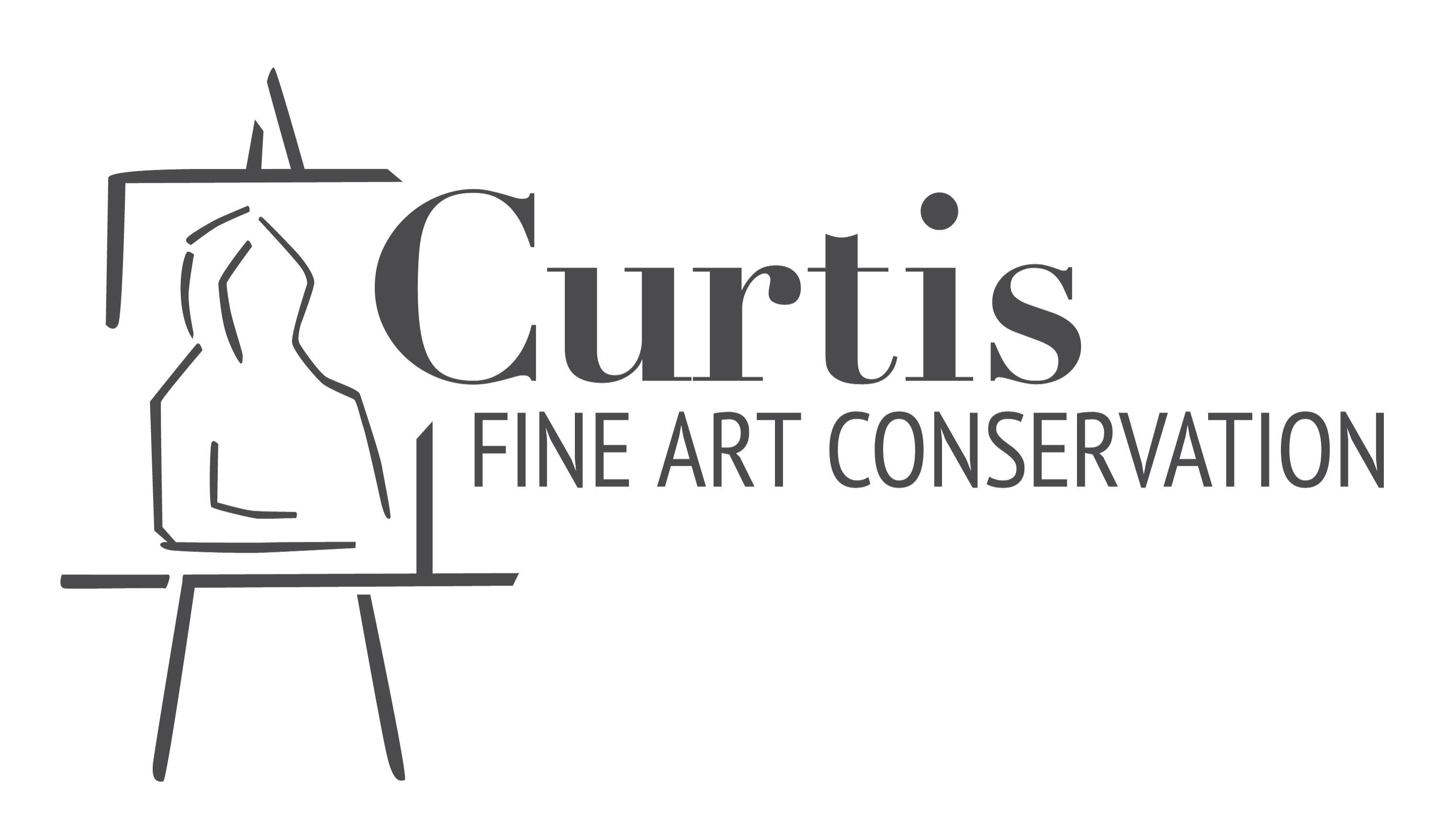
Before Treatment
Unidentified Artist after Jacques Blanchard, Saint Catherine of Alexandria, after 1630, oil on canvas, Private Collection. The painting was covered in layers of dark grime and cigarette smoke and nicotine as well as a heavy layer of discolored varnish.
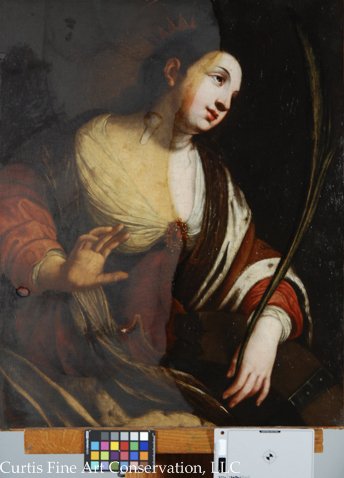
During Treatment
Unidentified Artist, Saint Catherine of Alexandria, after Jacques Blanchard, after 1630, oil on canvas, Private Collection (with heavy, discolored varnish partially removed).

After Treatment
Unidentified Artist after Jacques Blanchard, Saint Catherine of Alexandria, after 1630, oil on canvas, Private Collection.
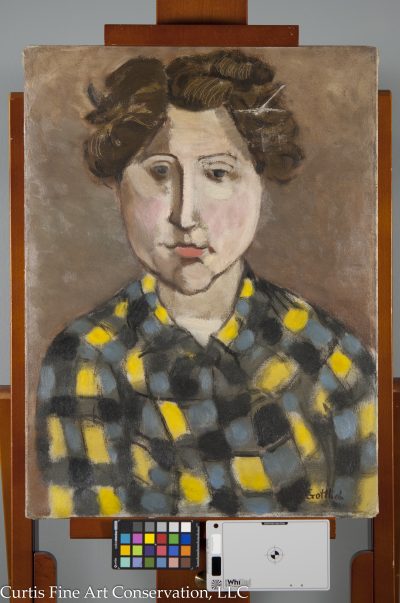
Before Treatment
Adolph Gottlieb, Portrait of Gladys Sikora, 1932/4, oil on canvas, Private Collection. This painting had suffered a damage decades before its repair in this studio. The primary goals of treatment were stabilization of lifting paint, local tear repair, grime reduction, and ensuring the support was tensioned onto an appropriate stretcher, as the current, unoriginal stretcher did not fit the painting properly.

During Treatment
Adolph Gottlieb, Portrait of Gladys Sikora, 1932/4, oil on canvas, Private Collection.
This image shows the painting after its structural treatment, with the tear having been mended locally, surface grime reduction completed, the losses filled, as well as the reduction of planar distortions overall.

After Treatment
Adolph Gottlieb, Portrait of Gladys Sikora, 1932/4, oil on canvas, Private Collection. In the final image, the losses have been integrated with the neighboring paint through inpainting with pigments ground in a reversible medium.


Before Treatment
Unidentified Artist, Landscape with Cart, circa mid 19th c., oil on canvas, Private Collection. The original canvas remained unlined, with dramatic planar distortions. The surface had a heavy deposition of dirt and grime, and discolored remnants of an older varnish. The primary goals of treatment were stabilization of cupping paint along cracks, grime reduction, and lining the painting to reinforce the original support. The lower image shows the original distortions under raking light.

During Treatment
Unidentified Artist, Landscape with Cart, circa mid 19th c., oil on canvas, Private Collection. This image shows the painting after its partial grime cleaning, before lining or reduction of planar distortions.


After Treatment
Unidentified Artist, Landscape with Cart, circa mid 19th c., oil on canvas, Private Collection. In the upper image, the planar distortions have been reduced, any losses have been filled and in-painted with pigments ground in a reversible medium, most surface grime has been removed, and a full lining has been attached to the reverse of the original support. The lower image shows the reduction of planar distortions under raking light.

Before Treatment
Unidentified Artist, Portrait of Mrs. Willoughby, c. 1830, oil on canvas, with large open tear

During Treatment
Unidentified Artist, Portrait of Mrs. Willoughby, c. 1830, oil on canvas. This image shows the painting after a fabric insert was applied and locally mended on the reverse. The insert was prepared for retouching and was toned red to approximate the original toning layer.
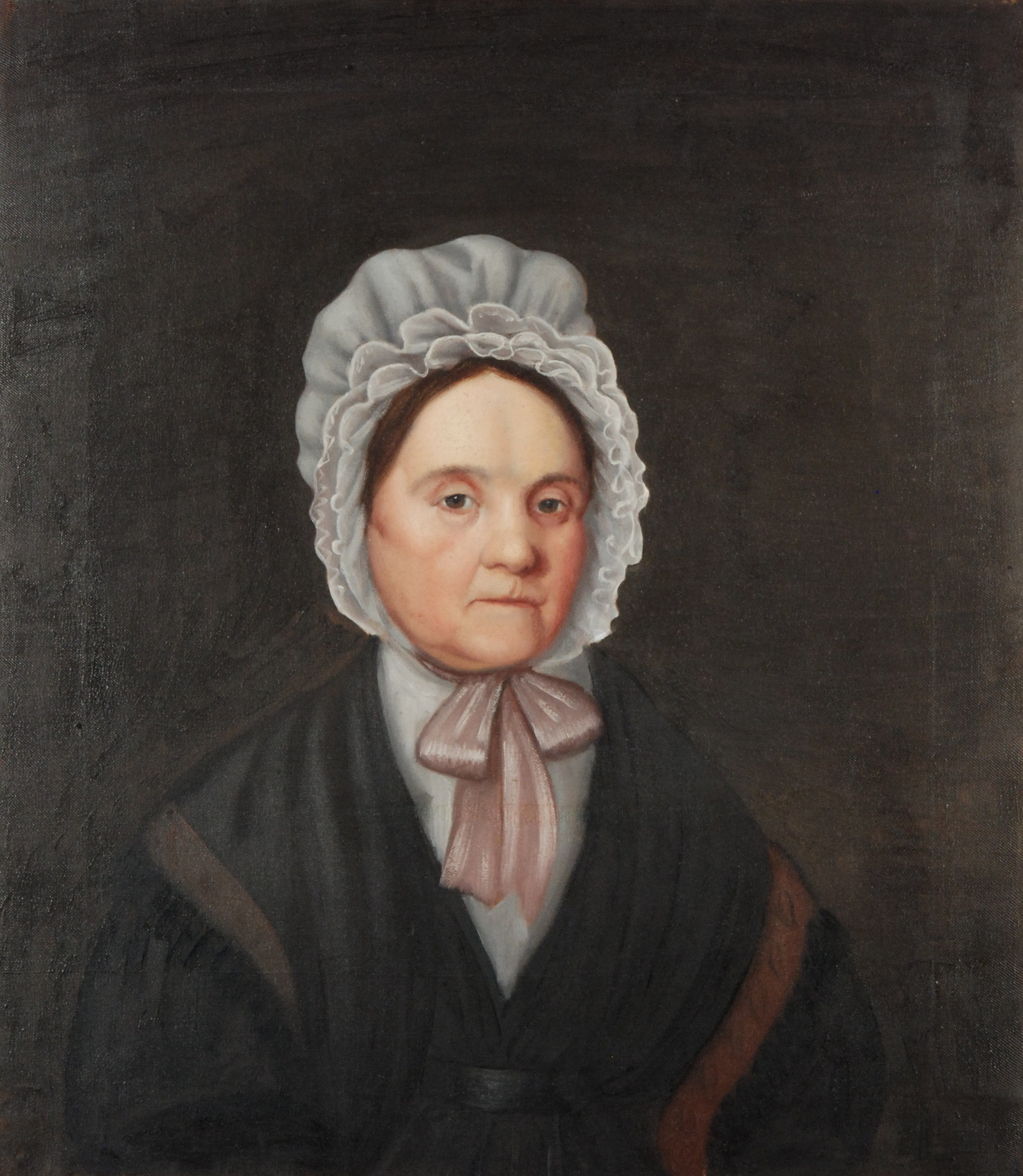
After Treatment
Unidentified Artist, Portrait of Mrs. Willoughby, c. 1830, oil on canvas. This treatment was conducted without removing the fabric support from its original strainer. After the torn section was locally stabilized, the fabric remained strong enough to support itself, and it was highly desirable not to disturb the original tacks or alter the original support.
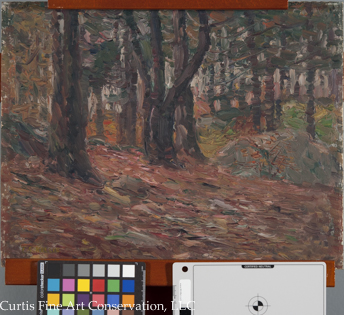
Before Treatment
Charles Salis Kaelin (1858-1929), Fall Woodland Scene, ca. 1920, oil painting on canvas board, Private Collection.
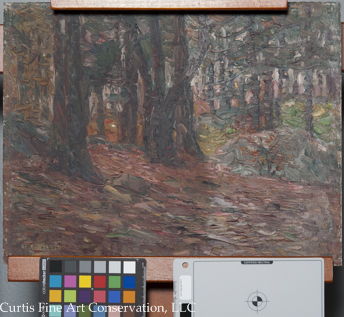
During Treatment
Charles Salis Kaelin (1858-1929), Fall Woodland Scene, ca. 1920, oil painting on canvas board, Private Collection. This image shows the unvarnished picture partially grime cleaned using specular light, which illustrates the paint surface’s dramatic change in gloss as a result of grime removal.
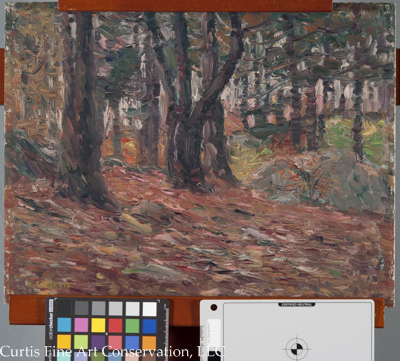
After Treatment
Charles Salis Kaelin (1858-1929), Fall Woodland Scene, ca. 1920, oil painting on canvas board, Private Collection.


Before Treatment
Markey Robinson (1918-1999), Yellow Moon, undated, oil painting on hardboard, Private Collection. The painting had several losses, focused mainly on the blue figure in the foreground. The surface was covered with a layer of grime. The lower image shows the painting under raking light.

During Treatment
Markey Robinson (1918-1999), Yellow Moon, undated, oil painting on hardboard, Private Collection. This image shows the unvarnished picture with the losses filled to be in plane with surrounding paint and textured to imitate brushstrokes.


After Treatment
Markey Robinson (1918-1999), Yellow Moon, undated, oil painting on hardboard, Private Collection. The images show the painting after a full grime cleaning and inpainting of losses. The lower image shows the painting under raking light.

Before Treatment
Unidentified Artist, Baby Chicks in a Landscape, ca. late 19th c, oil on canvas, Private Collection. This painting and frame were exposed to smoke and soot from a house fire, in addition to years of grime. The painting had a heavy, discolored varnish that was also extremely dull and coated in particulate dust.

During Treatment
Unidentified Artist, Baby Chicks in a Landscape, ca. late 19th c, oil on canvas, Private Collection. This image shows the painting with the varnish half cleaned.

After Treatment
Unidentified Artist, Baby Chicks in a Landscape, ca. late 19th c, oil on canvas, Private Collection. In addition to cleaning both the painting and frame, missing ornament was replaced on the frame and toned to match the surrounding gilding.
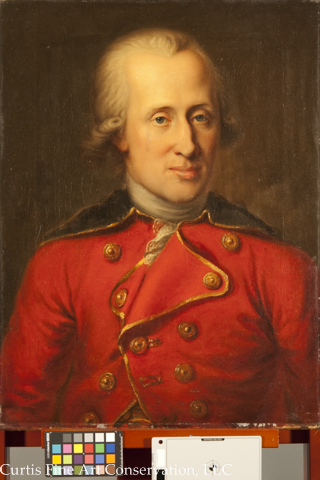
Before Treatment
Unidentified Artist, Portrait of Benjamin Thompson, known as Count Rumford, 1785, oil on canvas, Jamestown-Yorktown Foundation
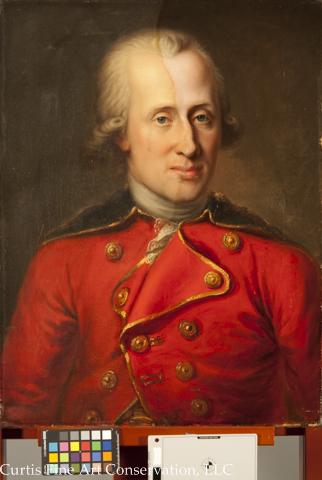
During Treatment
Unidentified Artist, Portrait of Benjamin Thompson, known as Count Rumford, 1785, oil on canvas, Jamestown-Yorktown Foundation
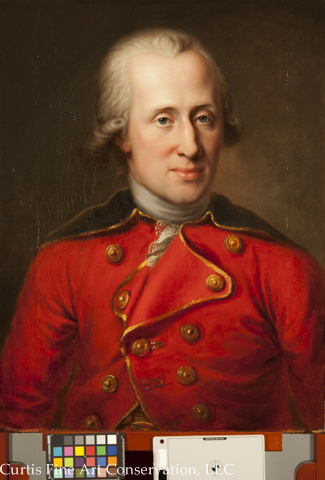
After Treatment
Unidentified Artist, Portrait of Benjamin Thompson, known as Count Rumford, 1785, oil on canvas, Jamestown-Yorktown Foundation

Before Treatment
Samuel F. B. Morse, Head Study for The Goldfish Bowl (Mrs. Richard Cary Morse and Family), c. 1835, oil on millboard, Muscarelle Museum of Art, The College of William and Mary
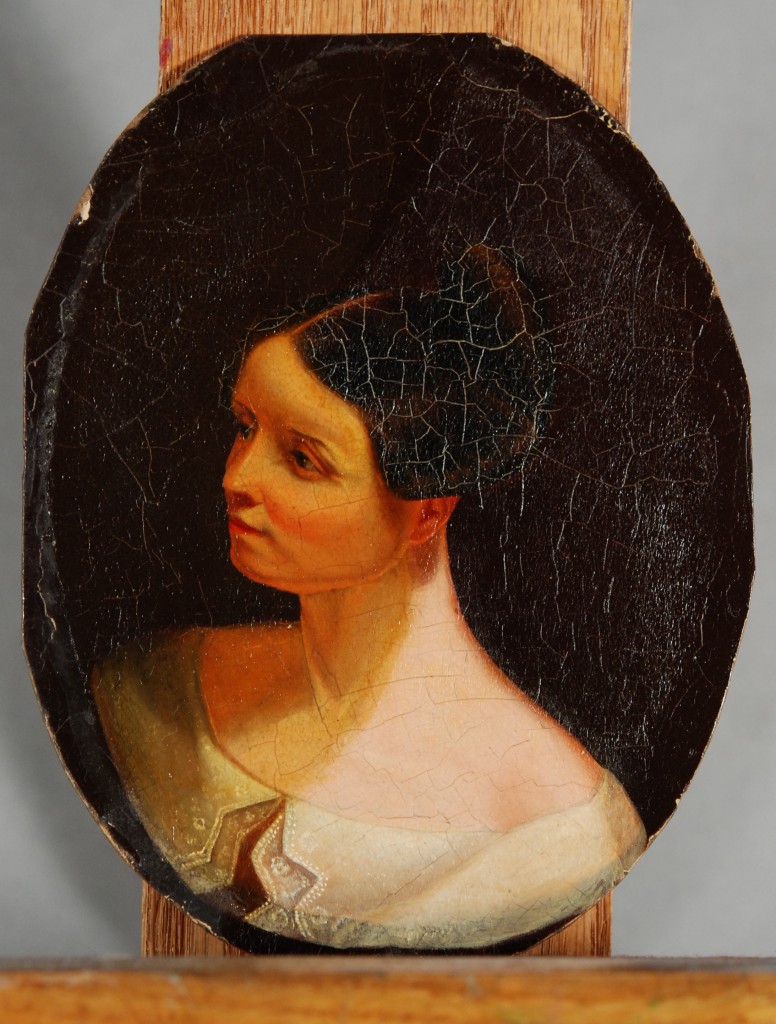
During Treatment
Samuel F. B. Morse, Head Study for The Goldfish Bowl (Mrs. Richard Cary Morse and Family), c. 1835, oil on millboard, Muscarelle Museum of Art, The College of William and Mary
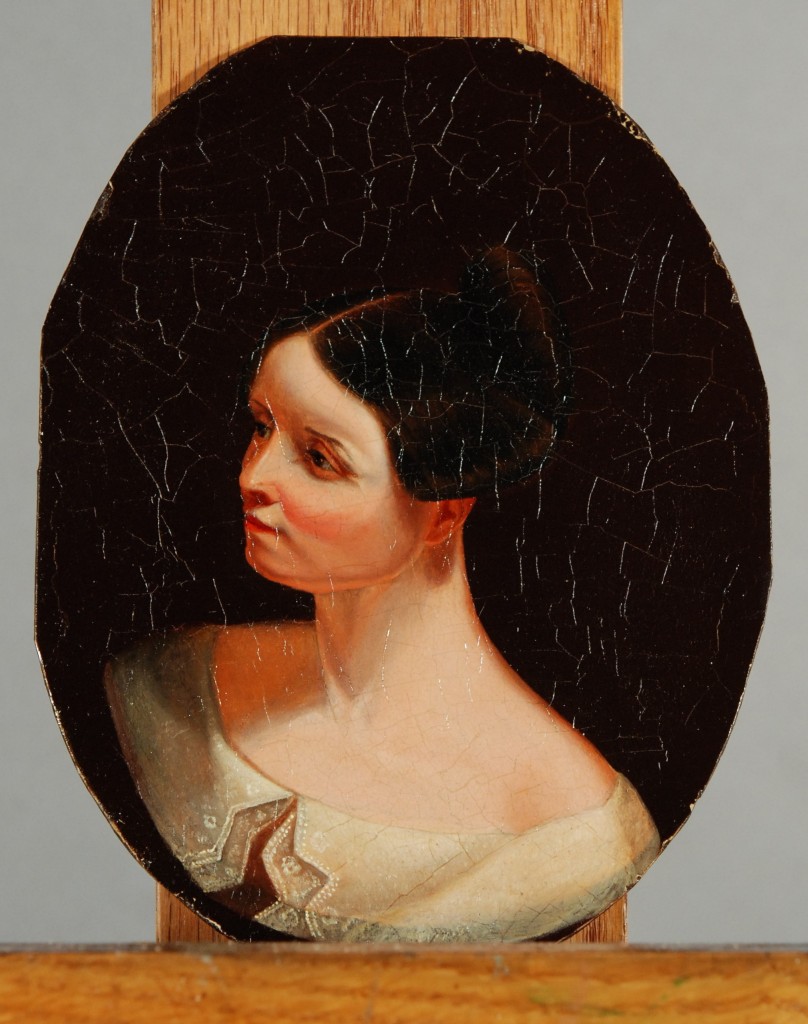
After Treatment
Samuel F. B. Morse, Head Study for The Goldfish Bowl (Mrs. Richard Cary Morse and Family), c. 1835, oil on millboard, Muscarelle Museum of Art, The College of William and Mary


Before Treatment
Unidentified Artist, Seascape, circa 1871-1876, Oil on canvas, Private Collection. The painting had experience tearing and had an adequate amount of grime build-up on the surface. The lower image shows the planar distortions caused by the tear through raking light.


During Treatment
Unidentified Artist, Seascape, circa 1871-1876, Oil on canvas, Private Collection. At the time of this image, planar distortions had been treated and the surface grime had been partially removed. The inscription on the back of the canvas was used to date the canvas and therefore supply an adequate estimate of when the painting was created.


After Treatment
Unidentified Artist, Seascape, circa 1871-1876, Oil on canvas, Private Collection. The surface grime was heavily reduced and losses were filled before being in-painted. The lower image shows the treated painting under raking light.
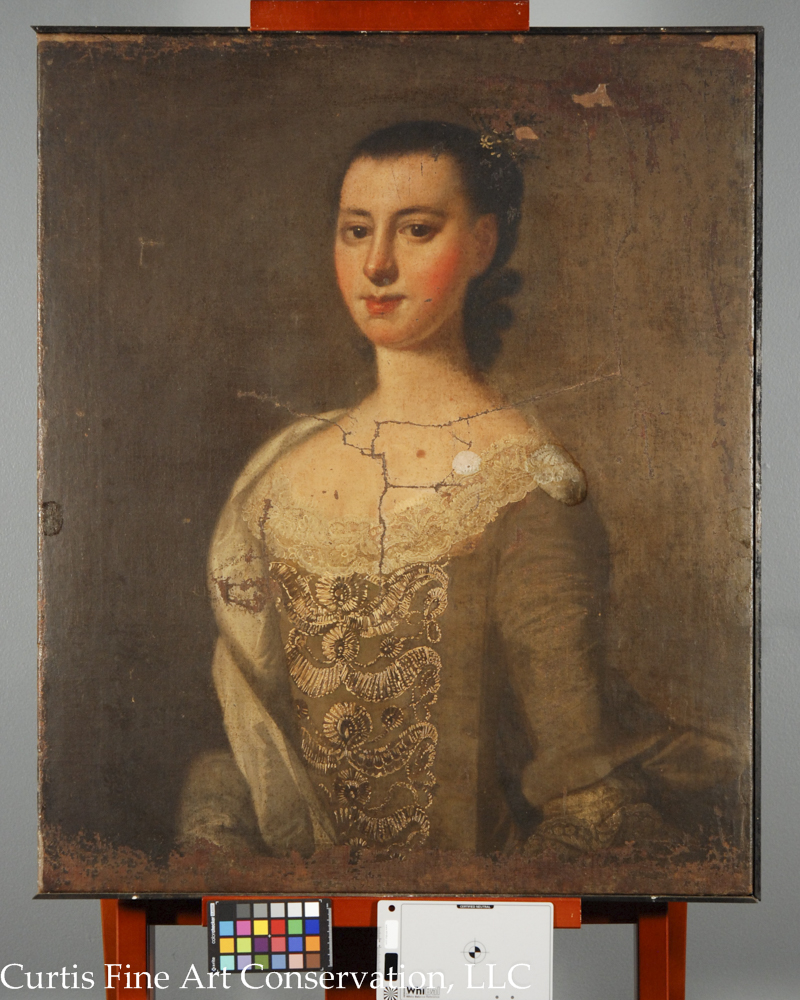
Before Treatment
Jeremiah Theus, Portrait of Catherine DuTarque, c. 1774, oil on canvas, Private Collection. This portrait was coated with a synthetic resin varnish as well as a significant layer of yellowed wax resin from a lining during a previous restoration over 50 years ago. At that time, the painting was stabilized and cleaned, but was not restored.

During Treatment
Jeremiah Theus, Portrait of Catherine DuTarque, c. 1774, oil on canvas, Private Collection. This image shows the painting half cleaned of the discolored varnish and wax resin.

After Treatment
Jeremiah Theus, Portrait of Catherine DuTarque, c. 1774, oil on canvas, Private Collection. All of the old losses were filled and retouched, allowing the painting to be seen as a complete portrait again. The original frame was lost long ago and had been replaced by a 19th c. frame that was not appropriate to the period of the painting. A new, reproduction frame was chosen to complement the picture.
